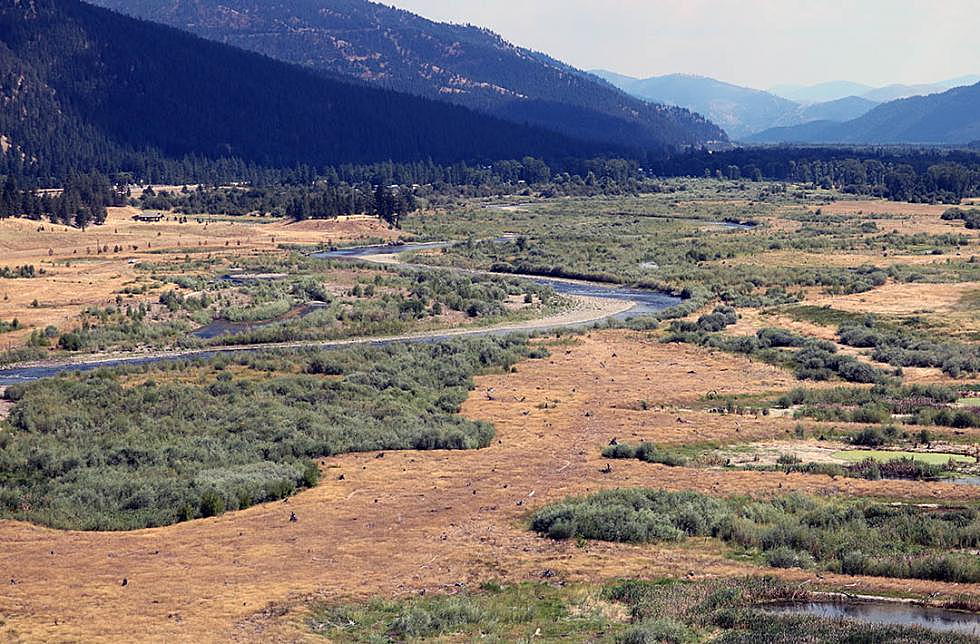
Environmental stewards fear cuts to the EPA could derail Clark Fork River cleanup
From a hill overlooking the confluence of the Clark Fork and Blackfoot rivers, the valley once inundated by water and mining sludge now stretches long and green, the vegetation just beginning to take hold.
Down below, the bugs grow big and the fish swim freely to historic spawning grounds, their path no longer blocked by a vintage dam. Like the fish, recreation is working its way back to the once-polluted river corridor.
“The Clark Fork isn't as isolated as it used to be, and wild trout and fish can move freely up and down the river system to spawning habitat,” said Karen Knudsen. “There's a new vibrancy, and we have an arsenic plume that's beginning to diminish. This river system is getting incredible recreational use, too, so we're seeing a boost to the outdoor economy.”
Knudsen, executive director of the Clark Fork Coalition, traces efforts to restore the Clark Fork River back to 1985, a full 15 years after President Richard Nixon created the U.S. Environmental Protection Agency, along with the Clean Water Act.
Back then, the nation's rivers were in tough shape with some, like the Cuyahoga River, occasionally catching fire. The Potomac River smelled of stench due to wastewater.
“Here in Montana, we had problems as well,” Knudsen said. “The Clark Fork routinely ran red with mining contamination, and Silver Bow Creek – the headwaters of the entire Clark Fork River system – was a dead zone, completely devoid of visible life. Not even a bug could make a living there.”
As far back as 1983, communities up and down the river system demanded action and won the support of the state's congressional delegation. Armed with technical horsepower and access to Superfund monies, the EPA added the river corridor to the National Priorities List and formulated a plan to restore the system to better health.
“We were able to press the EPA into coming up with the most ambitious, permanent and effective cleanup solution possible here,” said Knudsen. “The reservoir that was a toxic cesspool is gone, and 3.3 million cubic tons of contaminated waste is gone and safely stored in a repository outside the floodplain.”
Knudsen joined with health and other environmental watchdogs earlier this month to question why, given the cleanup success, the Trump administration would consider rolling back the clock with proposed cuts to the EPA and a streamlining of the Superfund program.
Scott Pruitt, head of the EPA, has pledged to make Superfund a top priority. Along with it, he has said, Superfund projects with responsible parties at the table would remain at the top of the list.
But this field season, Knudsen said, no activity has taken place on cleanup projects remaining within the Clark Fork River corridor. Given the success of past years, she's frustrated by the lack of forward momentum.
“With the end within reach, it's truly baffling to see the current administration slam on the brakes through budget slashing of the EPA and Superfund program and some of these regulatory rollbacks we're seeing,” said Knudsen. “We're in lockstep with Pruitt's vision, but we're not seeing the action on the ground.”
Joe Griffin, who retired from the Montana Department of Environmental Quality in 2015, served as the state project officer for Butte Priority Soils, along with the Anaconda site and the Butte Mine Flooding, otherwise known as the Berkeley Pit.
Much of the work that's been completed along the corridor, as well as ongoing efforts at the Berkeley Pit to treat and pump contaminated water from 10,000 miles of underground workings, has been financed by Arco.
Because of that, Griffin said, the work has taken place, though he fears what could happen over time if efforts aren't made to bolster the EPA and the Superfund program.
“We have a responsible party, and as a matter of fact, if we didn't have a responsible party, we wouldn't have the cleanup we have,” said Griffin. “Pruitt should be talking about a trust fund built by a tax on the mining, petroleum and chemical industries again and build that up.”
If cuts to the Superfund program are made, Griffin said, questions arise about who will pay to continue treating water in the Berkeley Pit. If that effort ceases due to a lack of funding, he added, contaminated water could again find its way into the Clark Fork corridor.
“If it isn't paid for and it isn't managed, I don't know how much the damage will go back down the Clark Fork, but it'll go a ways,” Griffin said. “Because we have set a geochemical engine in motion with those 10,000 miles of underground workings, the oxidation of the sulfides there and the production of acid and the release of metals, that's a task of managing it on a geologic time frame.”
Knudsen and others fearful of cuts to the EPA and the Superfund program are reaching out to the state's congressional delegation, hoping they'll push to bolster the program and resist cuts that could run as deep as 31 percent.
“We've been down the road of Superfund for 35 years now, trying to get our communities and river corridor cleaned up,” said Knudsen. “It's time to stop dinging around with budget slashing and politics and regulatory rollbacks. It's time to fully fund the EPA, fully fund Superfund, and give Montanans the clean water and healthy futures we all deserve.”
